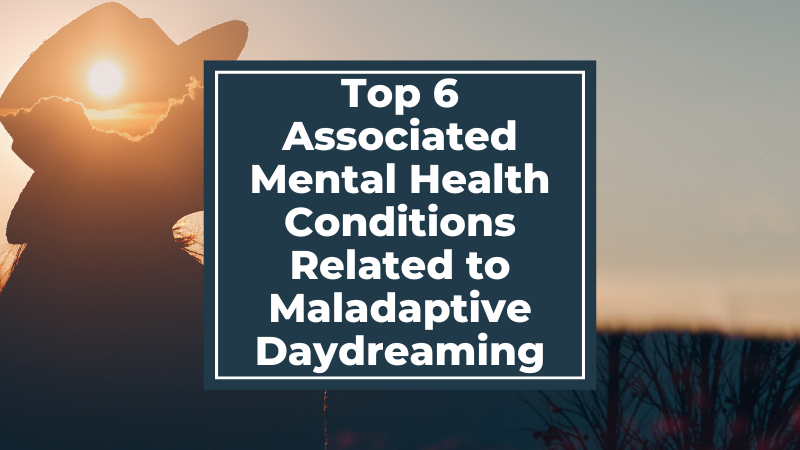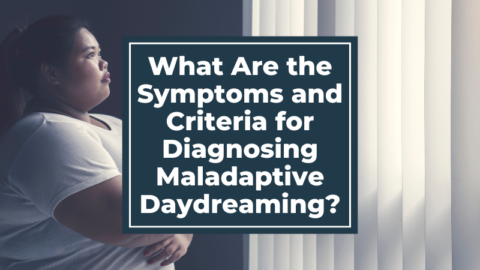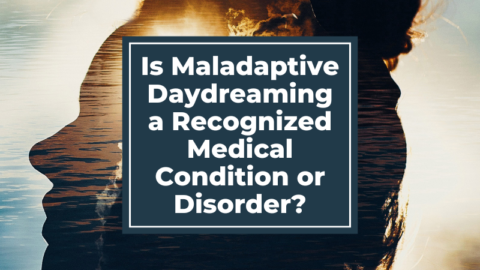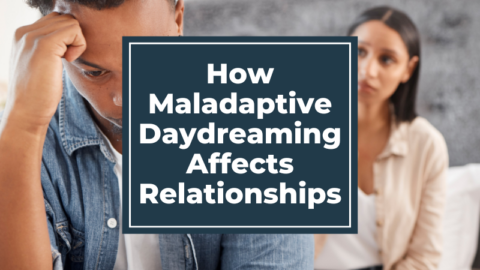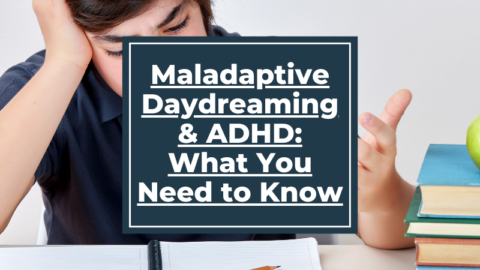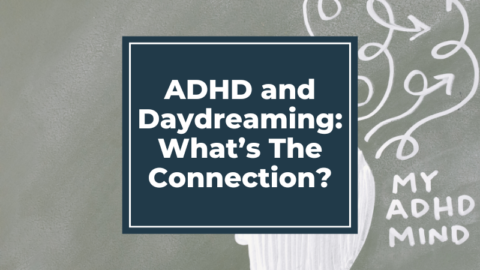Maladaptive daydreaming is a psychological phenomenon characterized by an intense and excessive preoccupation with vivid daydreams that can interfere with daily functioning. While maladaptive daydreaming itself is not officially recognized as a mental health disorder, it can be associated with a range of complications and co-occurring mental health conditions.
These conditions may either contribute to the development of maladaptive daydreaming or arise as a result of its impact on an individual’s life. Understanding these associated mental health conditions is crucial for a comprehensive approach to assessment, diagnosis, and treatment.
In this article, we will explore some of the top complications and associated mental health conditions linked to maladaptive daydreaming, shedding light on their interrelationships and potential implications for individuals affected by this phenomenon.
Top 6 Complications and Associated Mental Health Conditions Related to Maladaptive Daydreaming
While maladaptive daydreaming is not officially recognized as a mental health disorder, it can be associated with certain complications and co-occurring mental health conditions. Here are some of the potential complications and related conditions:
1. Impairment in Daily Functioning
Impairment in daily functioning is a common complication of maladaptive daydreaming. When daydreaming becomes excessive and intrusive, it can interfere with various aspects of a person’s life, leading to difficulties in functioning effectively and meeting their daily responsibilities.
One significant area of impairment is in academic or professional performance. Excessive daydreaming can consume a significant amount of time and attention, making it challenging to focus on tasks, concentrate on studying or work, and meet deadlines. This can result in decreased productivity, missed opportunities, and potential academic or occupational setbacks.
Maladaptive daydreaming can also impact personal relationships and social interactions. Individuals may find it difficult to engage in conversations, maintain eye contact, or actively participate in social activities because their attention is often diverted to their daydreams. This can lead to feelings of social isolation, strained relationships, and missed social opportunities.
Impairment in daily functioning can manifest in various ways, including difficulties in time management, neglect of personal responsibilities, reduced motivation, and a decreased sense of accomplishment. If left unaddressed, these impairments can significantly impact a person’s overall quality of life.
2. Distress and Emotional Dysregulation
Distress and emotional dysregulation are common complications associated with maladaptive daydreaming. Excessive daydreaming often serves as a coping mechanism to escape from or regulate unpleasant emotions, but it can also contribute to emotional distress and difficulties in emotional regulation.
One aspect of maladaptive daydreaming is that it can create a stark contrast between the imagined world and reality. While daydreaming, individuals may experience intense emotions and engage in vivid scenarios that provide temporary relief or satisfaction. However, when they return to the real world, they may feel a sense of disappointment, dissatisfaction, or frustration with their actual circumstances. This emotional dissonance can contribute to distress and a longing for the daydreaming state.
Moreover, maladaptive daydreaming can interfere with the development of healthy emotional coping strategies. Instead of dealing with real-life challenges or emotional difficulties directly, individuals may rely on excessive daydreaming as a means of escape or avoidance. This can lead to a cycle of emotional dysregulation, where the individual becomes increasingly reliant on daydreaming to cope with negative emotions, but is unable to develop healthier coping mechanisms.
Additionally, the immersive nature of maladaptive daydreaming can make it challenging to regulate emotions in real-life situations. Individuals may struggle to differentiate between their daydreams and reality, leading to difficulties in appropriately responding to emotional cues or managing interpersonal relationships. This emotional dysregulation can contribute to heightened levels of stress, anxiety, and a sense of disconnection from oneself and others.
3. Attention Deficit Hyperactivity Disorder (ADHD)
There is a recognized association between Attention Deficit Hyperactivity Disorder (ADHD) and maladaptive daydreaming. While not all individuals with maladaptive daydreaming have ADHD, research suggests that there is a higher prevalence of maladaptive daydreaming among individuals with ADHD compared to the general population.
ADHD is a neurodevelopmental disorder characterized by symptoms of inattention, hyperactivity, and impulsivity. Individuals with ADHD often struggle with maintaining focus, staying on task, and regulating their attention. They may also experience difficulties with executive functions, such as planning, organization, and time management.
Maladaptive daydreaming can serve as a coping mechanism for individuals with ADHD. Daydreaming provides an escape from the challenges of maintaining attention and focus, allowing individuals to engage in immersive and imaginative scenarios that capture their interest. It may provide a sense of control, excitement, or stimulation that is otherwise difficult to achieve in real-life situations.
For individuals with ADHD, maladaptive daydreaming can become problematic when it interferes with daily functioning and impairs important areas of life, such as work, relationships, and responsibilities. Excessive daydreaming can further exacerbate attention difficulties and hinder the ability to concentrate on tasks or engage in real-life activities.
It’s important to note that the relationship between ADHD and maladaptive daydreaming is complex and can vary among individuals. While maladaptive daydreaming may provide temporary relief or stimulation for those with ADHD, it is essential to address both ADHD symptoms and maladaptive daydreaming behaviors. This may involve a combination of therapy, medication, and behavioral interventions to manage ADHD symptoms and develop healthier coping mechanisms.
If you suspect that you or someone you know has both ADHD and maladaptive daydreaming, it is recommended to consult with a healthcare professional or mental health practitioner who specializes in ADHD and related conditions. They can provide a comprehensive assessment, offer appropriate treatment options, and support individuals in managing both conditions effectively.
4. Obsessive-Compulsive Disorder (OCD)
There is a potential link between Obsessive-Compulsive Disorder (OCD) and maladaptive daydreaming, although more research is needed to fully understand this relationship. OCD is a mental health condition characterized by intrusive thoughts, urges, or obsessions, as well as repetitive behaviors or compulsions that individuals engage in to alleviate anxiety or distress.
Some individuals with OCD may experience maladaptive daydreaming as a way to cope with their intrusive thoughts or to escape from their obsessive concerns. Daydreaming allows them to temporarily shift their attention away from their distressing thoughts or to create an alternative reality that feels more controllable or soothing. Engaging in vivid daydreams may provide a sense of relief or distraction from the anxiety associated with OCD symptoms.
On the other hand, maladaptive daydreaming itself can sometimes exhibit obsessive or compulsive characteristics. For example, individuals may feel compelled to engage in extensive daydreaming rituals, adhere to specific sequences or themes in their daydreams, or experience distress if they are unable to daydream.
It’s important to note that not all individuals with maladaptive daydreaming have OCD, and vice versa. However, if someone experiences symptoms of both conditions, it is essential to seek a comprehensive assessment from a mental health professional to accurately diagnose and develop an appropriate treatment plan. Treatment for OCD typically involves a combination of therapy (such as Cognitive Behavioral Therapy) and, in some cases, medication to manage symptoms and improve overall functioning.
5. Depression and Anxiety
Depression and anxiety are commonly associated with maladaptive daydreaming, and there can be a bidirectional relationship between these conditions. On one hand, maladaptive daydreaming can serve as a coping mechanism for individuals experiencing depression or anxiety symptoms. Daydreaming allows them to temporarily escape from negative emotions, overwhelming thoughts, or real-life stressors. It may provide a sense of comfort, control, or a way to experience positive emotions that may be lacking in their everyday lives.
On the other hand, maladaptive daydreaming can also contribute to or exacerbate symptoms of depression and anxiety. Excessive daydreaming can consume a significant amount of time and energy, leading to neglect of real-life responsibilities, social isolation, and feelings of guilt or self-criticism. This can further contribute to a sense of dissatisfaction, loneliness, and low self-esteem, which are common features of depression and anxiety.
Furthermore, the content of daydreams itself can be influenced by depressive or anxious themes. For example, individuals with depression may engage in daydreams that revolve around feelings of sadness, loss, or hopelessness. Similarly, individuals with anxiety may daydream about scenarios that involve worrying, catastrophizing, or imagined threats.
It’s important to note that maladaptive daydreaming, depression, and anxiety are distinct conditions and can occur independently of each other. However, when these conditions coexist, they can interact and influence one another. It’s crucial for individuals experiencing symptoms of depression or anxiety, along with maladaptive daydreaming, to seek professional help from mental health professionals who can provide a comprehensive assessment and develop an appropriate treatment plan. Treatment approaches may include therapy (such as Cognitive Behavioral Therapy), medication, or a combination of both, tailored to the individual’s specific needs.
6. Dissociative Disorders
Dissociative disorders and maladaptive daydreaming share some similarities and can be interconnected, although they are distinct conditions. Dissociation refers to a disruption in a person’s normal sense of self, identity, or reality, often as a response to trauma or intense distress. Dissociative disorders involve persistent and recurring experiences of dissociation, which can manifest in various ways such as dissociative amnesia, depersonalization, or derealization.
Maladaptive daydreaming can sometimes be seen as a form of dissociation, where individuals may experience a detachment from their surroundings and immerse themselves in elaborate and immersive daydreams. This excessive daydreaming can provide a temporary escape from reality and may serve as a coping mechanism for individuals who have experienced trauma, stress, or difficulties in their lives.
While there can be an overlap between maladaptive daydreaming and dissociative experiences, it’s important to note that not all individuals who engage in maladaptive daydreaming meet the criteria for a dissociative disorder. Dissociative disorders are characterized by a range of symptoms that extend beyond excessive daydreaming, and a proper diagnosis requires a comprehensive evaluation by a mental health professional.
If someone experiences significant distress or impairment in their daily life due to maladaptive daydreaming or dissociative symptoms, it’s important to seek professional help. Mental health professionals, such as psychologists or psychiatrists, can conduct a thorough assessment, provide an accurate diagnosis, and develop an appropriate treatment plan tailored to the individual’s needs. Treatment approaches may include therapy, medication, or a combination of both, with a focus on addressing underlying trauma, improving coping skills, and promoting overall psychological well-being.
While the aforementioned complications and associated mental health conditions are commonly observed in individuals with maladaptive daydreaming, it’s important to remember that not everyone who engages in excessive daydreaming will experience these issues. Additionally, the relationship between maladaptive daydreaming and other mental health conditions is still being studied, and more research is needed to fully understand the extent of their connection.
It’s worth noting that each individual’s experience with maladaptive daydreaming can vary, and not everyone will exhibit the same complications or associated conditions. If someone you know is experiencing significant distress or impairment due to maladaptive daydreaming or related symptoms, it is advisable to seek professional guidance from a mental health specialist for a comprehensive evaluation and personalized treatment approach.
Final Thoughts on Mental Conditions Related to Maladaptive Daydreaming
Maladaptive daydreaming is a complex psychological experience that can have significant implications for an individual’s mental well-being and daily functioning. While maladaptive daydreaming itself is not classified as a mental health disorder, it can be associated with various complications and co-occurring conditions that warrant attention and proper management.
Recognizing these associations and understanding the potential impact on an individual’s life is crucial for providing effective support and treatment. By addressing the underlying mental health concerns, developing coping strategies, and enhancing overall well-being, individuals with maladaptive daydreaming can find relief and achieve a better balance in their lives.
What are your thoughts on the relationship between these associated mental health conditions and maladaptive daydreaming? Share them with us on the Maladaptive Daydreaming Forum.

